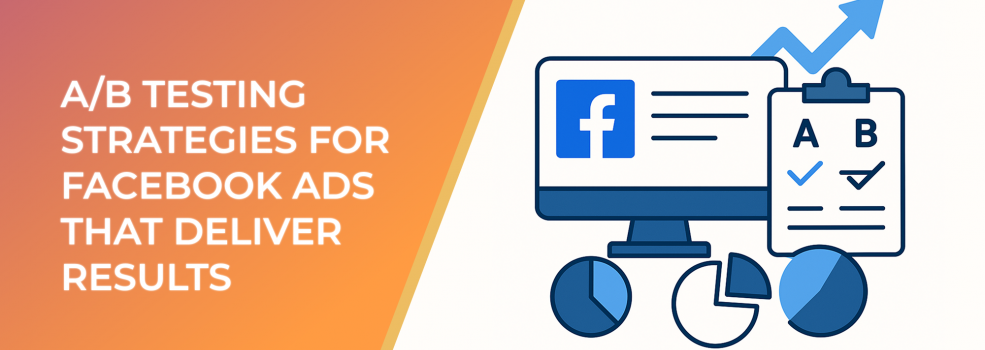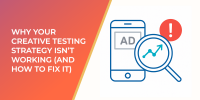Facebook ad optimization is not a guessing game. With over 10 million active advertisers on Facebook, competition is intense. Studies show that advertisers who run structured A/B tests can improve click-through rates (CTR) by up to 40% and reduce cost-per-click (CPC) by as much as 30%.
Instead of relying on assumptions, A/B testing (also known as split testing) allows you to compare two or more variations of your ads to see which performs best. By systematically testing elements, you make data-driven decisions that directly improve ad performance.
What You Can Test in Facebook Ads
Illustration of how A/B test elements (creative, copy, audience) align across campaign, ad set, and ad levels
-
Ad Creative
Test different images, videos, or carousel formats. For example, a static image ad may get strong impressions, but a short video could double engagement. -
Ad Copy
Experiment with headlines, CTAs, and body text. Even small tweaks in language (e.g., “Shop Now” vs. “Get Yours Today”) can impact CTR. -
Targeting Options
Compare custom audiences, lookalike audiences, and interest-based targeting. Precise targeting is at the core of Facebook ad performance. -
Placements
Test automatic placements vs. manual (e.g., Facebook Feed vs. Instagram Stories). On average, ads in Stories deliver 35% higher recall rates than feed placements. -
Bidding Strategies
Experiment with lowest-cost bidding vs. cost-cap bidding to see which maximizes conversions at scale.
Best Practices for Running Facebook Ad A/B Tests
-
Test One Variable at a Time
Isolate the factor you want to measure. Testing multiple elements at once clouds results and reduces accuracy. -
Use Statistical Significance
Don’t stop a test too early. A minimum sample size is critical — aim for at least 1,000 impressions per variation. -
Set Clear Objectives
Define whether you are optimizing for clicks, conversions, or reach. This ensures you’re measuring success accurately. -
Leverage Facebook’s Built-in A/B Testing Tool
Ads Manager offers an Experiments feature, which randomizes audience distribution and prevents overlap. -
Analyze Beyond Surface Metrics
A variation with higher CTR may not deliver the best return. Always review cost per conversion and ROAS (Return on Ad Spend).
Real-World Impact of Facebook A/B Testing
Graphical overview of key performance metrics and improvements driven by A/B testing
Brands that consistently run structured A/B tests report measurable improvements:
-
Up to 25% lower cost per conversion when testing creative formats.
-
2x higher engagement rates when testing audience segments.
-
15–30% improvement in ROAS from optimized bidding strategies.
This shows that systematic testing isn’t optional — it’s a necessity for scaling profitable campaigns.
Continuous Improvement Through Iteration
A/B testing isn’t a one-time activity. Facebook ad optimization is an ongoing process. Once you identify a winning variation, test it against a new challenger. Over time, this iterative process compounds results, lowering costs and improving conversion efficiency.
Think of it as a feedback loop: Test → Learn → Apply → Test Again.
Suggested Reading
For a deeper dive into related strategies, check out these articles on LeadEnforce:
-
Why You See 'Ad Set May Get Zero' on Facebook and How to Fix It
-
Meta Ad Campaign Objectives Explained: How to Choose the Right One
Conclusion
A/B testing is one of the most powerful tools for Facebook ad optimization. By systematically experimenting with creatives, copy, targeting, and bidding, advertisers unlock insights that lead to measurable gains in performance. The key is consistency: keep testing, keep learning, and keep optimizing until your campaigns deliver the results you need.

